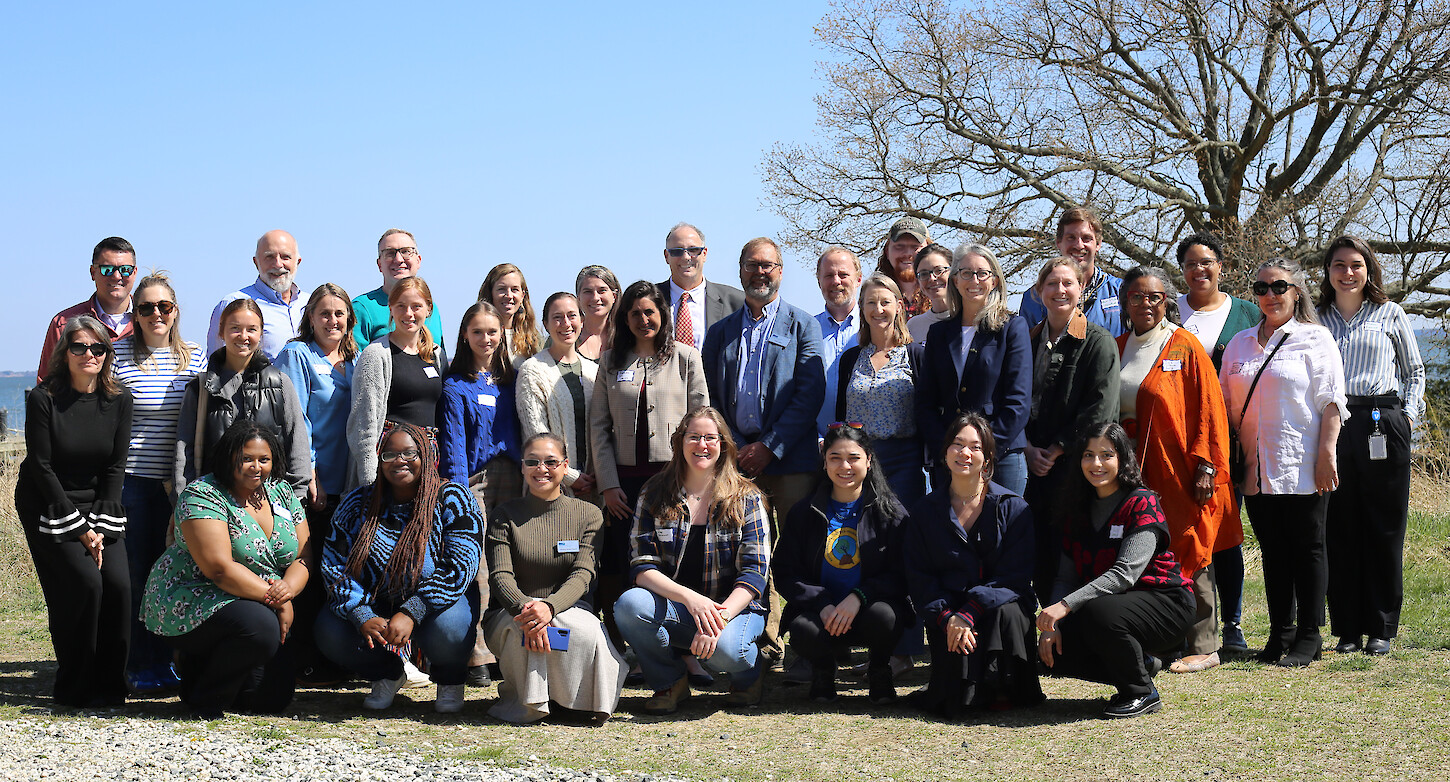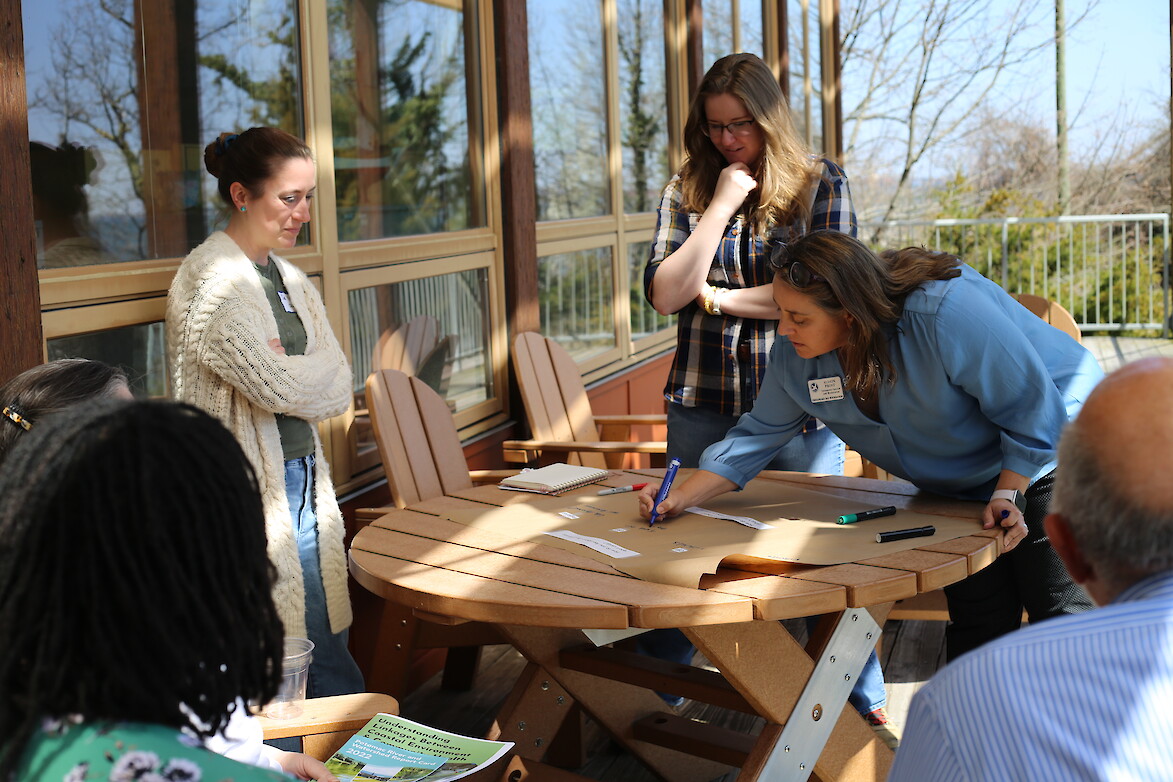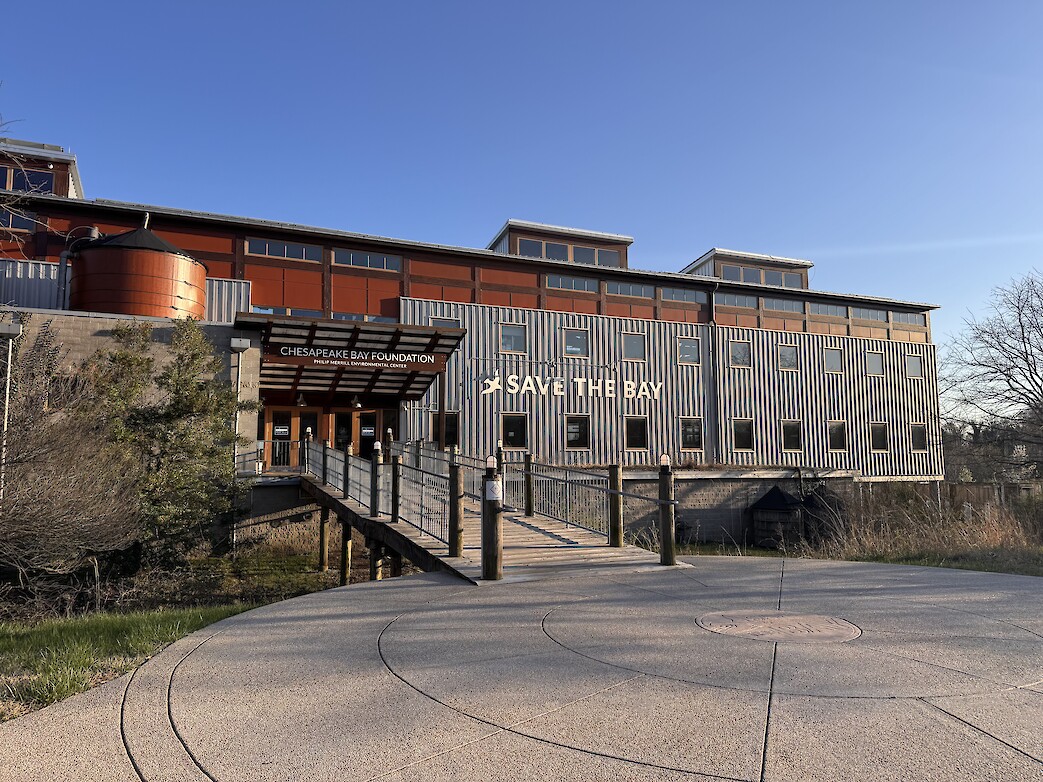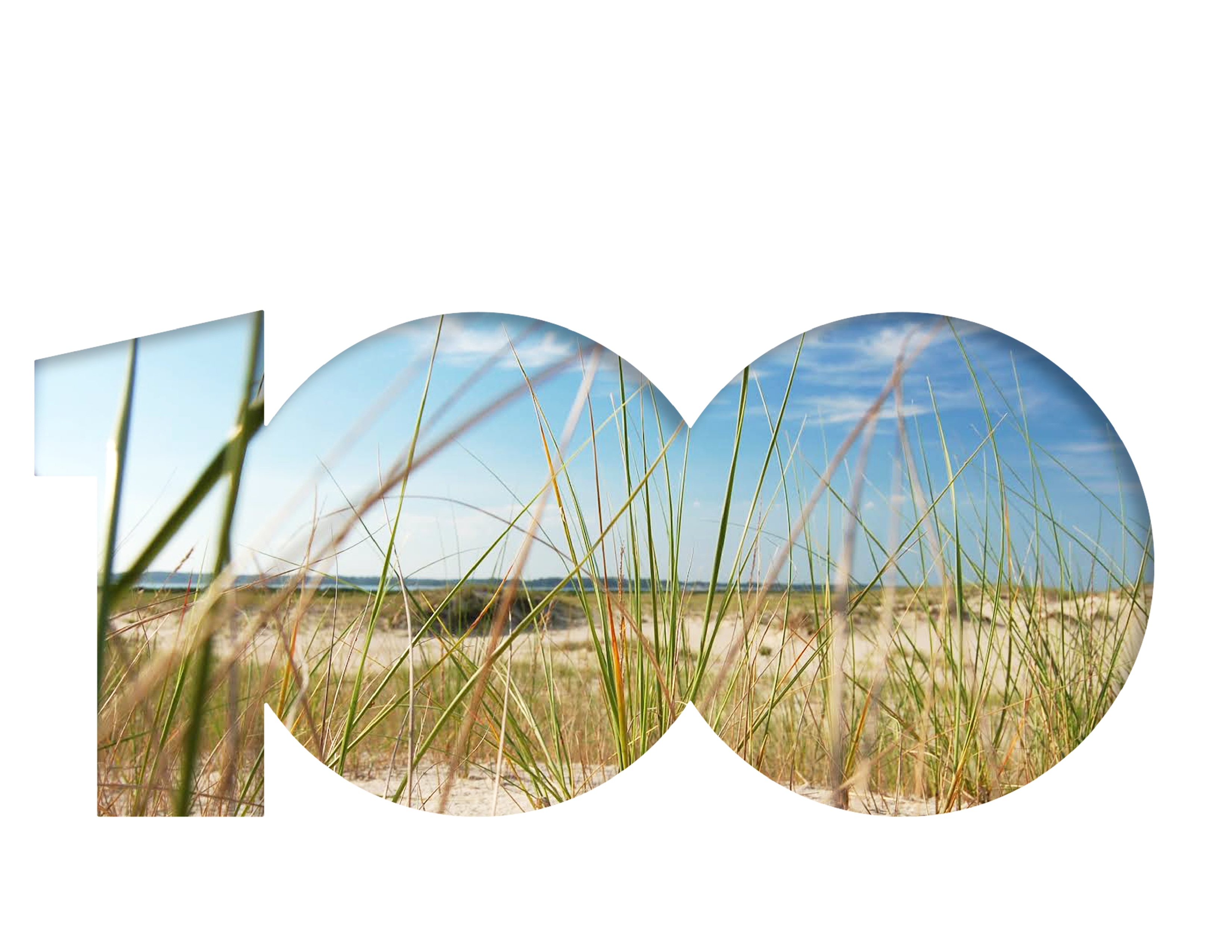The Chesapeake Bay Foundation’s Role in Environmental Education
Sabine Malik ·On April 1st, 2025, environmental managers from groups across the Chesapeake Bay watershed convened at the Chesapeake Bay Foundation’s (CBF) offices in Annapolis, Maryland, to broadly discuss the different environmental report cards issued for the region, their influence, and future goals. For the Chesapeake Bay, such report cards are issued by several organizations. The University of Maryland Center for Environmental Science (UMCES) hosted this event in collaboration with the Chesapeake Bay Foundation, as they look to standardize their report cards in the future.

Released on a biannual basis, the State of the Bay report by CBF is highly anticipated by environmentally-minded community members and scientists alike (4). Similarly, the Chesapeake Bay and Watershed Report Card issued by UMCES is released annually and highly regarded, garnering millions of media impressions each year (1). However, part of the impetus for this meeting was to combine efforts between UMCES and CBF to issue joint report cards so that people do not get “report card fatigue” due to so many publications, and at times, mixed messaging. This meeting also emphasized the importance of report cards and the many ways they can be used for science education, environmental management, and genuine research purposes. The Integration and Application Network at UMCES is directly responsible for the synthesis and release of these report cards, having 20 years of experience and being an early adopter of the environmental report card model. Similarly, the Bay Foundation also started early in 1998 and their digestible Bay Reports are now a publicly anticipated release (3).
Throughout the meeting, we heard about the history and theory behind these environmental report cards, and how the teams responsible for them have had international success stories by applying a similar framework to other watersheds. The release of environmental report cards promotes transparency and environmental understanding but can also help environmental management professionals understand which areas to prioritize and which stakeholders to engage. After hearing talks from both UMCES and CBF, everyone broke out into groups to undergo a series of collaborative brainstorming exercises and information sharing. These questions were developed by UMCES and CBF as a way to refine future report cards and make sure they are meeting the needs of the Bay community members.
Attendees were asked if and how they use the currently released environmental report cards, their relative sentiments of each distinct Bay report card that is released, new indicators that would be helpful to include, and more. These questions prompted interesting discussions across organizations and fostered collaboration toward a shared goal. This information was then of course also redistributed to UMCES and CBF, where they will take it into consideration when producing upcoming report cards.

The Chesapeake Bay Foundation has been crucial in producing advocacy and environmental education material like the State of the Bay reports for decades. The Bay Foundation started in 1966 and was the first of its kind in the region, making it the largest and most influential. The origins of the Chesapeake Bay Foundation were from an unexpected group. They were not scientists or extreme environmentalists, but rather average businesspeople in the region that were frustrated by what they were seeing happen to their beloved home. Their vision was for a healthy and resilient Chesapeake Bay ecosystem where people, plants, and animals thrive together (3). This has morphed into the mission for this organization, which is to “Save the Bay and its waterways by educating, uniting, and inspiring people to take action.” The Bay Foundation has always had roots in education, but noticed there was a void of people that were focused on actually cleaning up the Bay and a lack of accountability by decisionmakers not unified in their efforts to save the bay (2).
We had the opportunity to speak with Vice President for Environmental Protection and Restoration Alison Prost and President and CEO Hilary Falk from CBF about the history of the organization and its future. At its heart, Chesapeake Bay Foundation is tethered to advocacy, which they define simply as “making a case for what’s important to you.” Notably, teaching can be an important form of advocacy through environmental education in this case. While the Foundation has roots in traditional advocacy from a lobbying perspective, these days they are more focused on education as a vehicle for change. The Bay Foundation has offices in Maryland, Pennsylvania, and Virginia and spends time in general assembles and government hearings to have students and “Clean Water Captains” share their voices with policymakers.

The Bay Foundation does a lot of work with stakeholders and facilitating community conversations. They emphasize the idea that it’s much harder to argue about the “why” you are concerned about an issue than the solutions, so they always try to hear peoples’ “why.” Another aspect of the organization is the litigation department that started in 2004, which recognizes that there are times you have tried other remedies and need to pursue legal action. They also have large environmental education programs, as they have educated roughly 30,000 students across the watershed and have taken over a million out on field trips. The Bay Foundation operates 14 education programs and 11 floating classrooms that take students out on the bay (2). As Alison and Hilary spoke to in their own lives and experiences, connecting with the Bay at a young age is when caring about the environment starts, so it’s crucial to integrate this into classrooms.
Other initiatives involve oyster restoration, as they have a goal of putting 10 billion oysters into the Chesapeake Bay. They are also involved in tree planting in Pennsylvania. The Chesapeake Bay Foundation also boasts impressive environmentally-friendly buildings. The building we were in for this meeting was the Phillip Merril building, which was the first Leed Platinum building in the world. It has solar panels, rainwater reuse, composting toilets, unpaved surfaces, reclaimed wood building materials, and more. They also have the Brock Environmental Center in Virginia Beach which makes all of its energy through food and deals with its own waste. It has wind turbines, specialty windows to deal with heating and cooling, and they grow oysters.
The Chesapeake Bay Foundation is in the midst of working on updated missions and strategies in what will be a new strategic plan releasing soon. While this information is still not publicly released, we had the privilege of previewing the material. From this, it is clear that environmental education and advocacy will be a continued priority for the Chesapeake Bay Foundation and that it is clear they plan to continue doing the impactful work they are known for across the watershed.
References
1) 2023/2024 Chesapeake Bay & Watershed Report Card | Publications | Integration and Application Network. (n.d.). Retrieved April 14, 2025, from https://ian.umces.edu/publications/2023-2024-chesapeake-bay-watershed-report-card/
2) Mission, Vision, Values, and Plan. (n.d.). Retrieved April 14, 2025, from https://www.cbf.org/about-cbf/our-mission/index.html
3) Our History. (n.d.). Retrieved April 14, 2025, from https://www.cbf.org/about-cbf/history/index.html
4) State of the Bay Report—Chesapeake Bay Foundation. (n.d.). Retrieved April 14, 2025, from https://www.cbf.org/about-the-bay/state-of-the-bay-report/index.html
About the author
Sabine Malik

Sabine Malik is a Ph.D. student at the University of Maryland, College Park studying the impacts of urban aquatic pollution on the reproductive health of the male mummichog, an estuarine fish species. She received her undergraduate degree from American University in Environmental Science and is passionate about restoring the health of the Chesapeake Bay.
Next Post > Climbing Down the Ivory Tower
Comments
-
Zhongshi He 8 months ago
What's really amazing is how Sabine shows how CBF started as a small group of concerned citizens and grew into one of the most important environmental organisations in the area. They've kept their focus on a simple but powerful mission: Save the Bay. I really loved the way that the blog emphasises teaching as a form of advocacy. It's so important to build those emotional connections to the Bay from a young age. That way we can be sure to cultivate a lifelong love of environmental stewardship. I really enjoyed reading it, it was such an excellent and inspiring read!
-
Lina Goetz 8 months ago
I think you did a really good job portraying CBF's mission and goals and showing how different stakeholders come together to collaborate. Your photos really help bring everything together as well!
-
M.J. Parsons 8 months ago
Great job providing an in-depth review of the meeting. Your blog did a nice job of outlining the collaboration between various stakeholders and the effort that is involved in the analysis of the report card programs. Nice work!
-
Vanessa Mukendi 7 months ago
I think you did a great job with this blog. You took away alot of key points from the meeting we had with the Chesapeake Bay Foundation and stressed the importance of stakeholder engagement. I also like the pictures provided.
-
Wyatt Palenchar 7 months ago
Great work. I think you did a really good job capturing the history, role, and mission of the Chesapeake Bay Foundation. I also liked how you included specific examples from the trip to the Foundation to further demonstrate their identity as an organization and the work they do.

